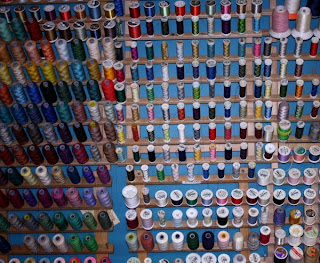
Valentine's day seems to be a day for sweets- heart shaped boxes of chocolates and candy hearts seem to be timeless ways that we celebrate this holiday. Personally, I'd prefer something homemade- nothing says "from the heart" than dessert fresh from the oven. And so, we have a few sweet recipes for you this Valentine's season.
The first recipe here is one of my family's favorites, both to make and to eat! My little helper was making these with me the other day, so he took some pictures to help you see how to make them.
Banana Cocoa Bars
1 1/2 c. mashed ripe bananas (about 3)

1/2 c. butter or margarine, softened
1 c. sugar
1 egg
1 t. vanilla extract
1 1/2 c. all purpose or whole wheat flour
1 t. baking powder
1 t. baking soda
1/2 t. salt
1/4 c. unsweetened cocoa powder
1. Preheat oven to 350* F. Grease a 9"x 13"x 2" pan.
2. Beat butter and sugar with electric mixer until fluffy, about 30 sec. Add egg and vanilla, beat until well combined. Stir in bananas.

3. In another bowl, combine flour, baking powder and soda and salt. Add banana mixture and stir just until combined.
4. Remove half of the batter to the banana bowl. Add cocoa to one half of the batter, mix well. Spread cocoa mixture into pan. Spoon banana mixture over the top and swirl with a knife to marble.
5. Bake 25-30 minutes, until top is golden brown. Allow to cool before cutting into bars.

Yield: 24 bars
This next recipe is a unique cookie made with corn flakes, which gives them a wonderful crunch. This is a family favorite from Nancy of
NancyEllenStudios and
DesignsStainedGlass.
Cornflake Cookies
1/2 c. butter or margarine
1/2 c. white sugar
1/2 c. brown sugar
1 egg
1/2 t. vanilla
1 1/4 c. flour
1/2 t. cream of tartar
1/2 t. baking soda
1 c. cornflakes
1. Preheat oven to 375* F.
2. In large bowl, beat butter with electric mixer until softened. Add sugars, beat until fluffy. Add egg and vanilla, beat well.
3. In a different bowl, combine flour, cream of tartar and baking soda. Add gradually to butter mixture. Beat well.
4. Fold in cornflakes with a wooden spoon. Drop by rounded teaspoons onto an ungreased cookie sheet.
5. Bake 8-10 minutes. Let cool 30 seconds before removing from sheets.
Yield: approx. 36 cookies
Maybe you're looking for something a bit fancier than just a cookie. The other day I tried my hand at flan, and discovered it's not as hard as you'd think! And with only four ingredients, you may not even have to run to the store in order to make it.
 Classic Flan
Classic Flan
2/3 c. sugar, separated
3 eggs
1 1/2 c. milk or half and half
1 t. vanilla
1. To caramelize sugar, in a heavy saucepan, cook 1/3 c. sugar over medium heat until it begins to melt, shaking pot occasionally but not stirring. Once it starts to melt, reduce heat to low and cook about 5 minutes until all of sugar is golden, stirring occasionally with a wooden spoon. Immediately pour sugar into bottom of a 9" round baking pan and tilt to coat. (The sugar hardens quickly, so act fast!) Allow to cool 10 minutes.
2. In large bowl, beat eggs well. Add milk, vanilla, and remaining 1/3 c. sugar. Beat until well combined but not frothy. Pour into sugar-coated baking pan. Place pan into larger baking pan. Pour very hot to boiling water into larger pan to a depth of at least 1", or halfway up the flan pan.

3. Bake at 325* F. approx. 1 hour, until a knife inserted in the center comes out clean. Remove pan from water bath. Cool at least 1 h.
4. To unmold, loosen edges with a sharp knife. Cover with serving platter and invert pans together. (This is the second tricky part!). Cover and chill overnight before serving for best flavor.
Yield: 8 slices
From
Robin's kitchen to yours, have a sweet Valentine's Day!
 1. Combine soup, lemon juice, oregano, broccoli, tomatoes and tuna. Mix well. Stuff each shell. Arrange in a buttered baking dish, 9 x 13.
1. Combine soup, lemon juice, oregano, broccoli, tomatoes and tuna. Mix well. Stuff each shell. Arrange in a buttered baking dish, 9 x 13.

































